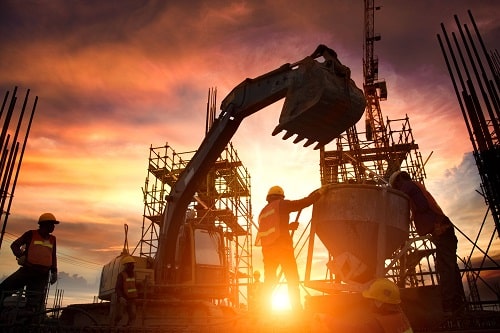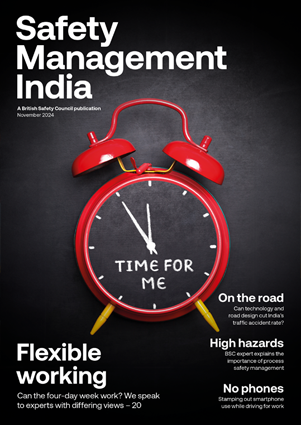With rising numbers of suicides in construction, how is the industry responding to the crisis?
Features
Mental health in construction: building the next storey
Poor mental health in construction has been called the ‘silent epidemic’. Yet a great deal of noise has been made to raise awareness of the issue. Thanks to the efforts of campaigners and others, we know a lot about the causes, conditions and of course, the statistics showing the extent of the problem.
The starkest of these statistics are those on suicide. According to latest data from the Office for National Statistics covering England and Wales, workers in construction are now nearly four times more likely to take their own lives than in other sectors.
Suicide rates have also increased in recent years despite the growth in mental health support available. In 2021, 507 construction workers took their own lives, equivalent to two workers every day. The death toll equates to 34 people per 100,000 in employment – up from 26 per 100,000 seven years ago.
 Suicide rates among men in construction have increased in recent years despite the growth in mental health support available. Photograph: iStock
Suicide rates among men in construction have increased in recent years despite the growth in mental health support available. Photograph: iStock
More than half, or 56 per cent of safety reps in construction reported an increase in mental health issues in the past year, according to a recent TUC survey. “Without doubt, we are a very challenged sector in construction with the number of people that sadly take their own lives or get into severe difficulty,” says Allan Wright, managing director of building materials supplier Civils & Lintels.
Beating the stigma
In recognition of the problem, there has been a determined effort to change things for the better and push the issue of mental health in construction up the agenda.
Mates in Mind was set up in 2017 in response to a gap identified two years earlier by the Health in Construction Leadership Group (HCLG), which found there was no specific mental health support for the sector. Yet suicide rates were high and there was a general reluctance to discuss mental ill health in this predominantly male environment, says Steve Hails, director of Business Services & HSW at Tideway London and chair of trustees at Mates in Mind: “We wanted to raise the profile of mental health, get people talking and achieve some parity between health, specifically mental health, and safety in construction. By doing that we would address the stigma and encourage people to say ‘it’s ok to not be ok’ and come forward and engage in conversations around mental health.”
Big strides in 10 years
Early work from Mates in Mind and others has focused on getting the industry talking and equipping workers to be able to spot the signs of someone struggling.
Big strides have been made in this area and more people in construction are sharing their story and opening up. James Dick, senior SHEQ advisor at construction services company, Kaefer, tells us how he considered taking his own life 10 years ago. “I was in a dark place, a marriage break-up and I was making poor lifestyle choices. I was going to end it all.”


 Risk factors for stress in the industry include long hours, working in all weathers, deadlines and overwork. Photograph: iStock
Risk factors for stress in the industry include long hours, working in all weathers, deadlines and overwork. Photograph: iStock
He got the help he needed thanks to a friend who suggested he speak to his GP, but, looking back, he says: “I think the culture from the leaders then was… ‘what have you got to be depressed about, you have a job?’” He says the difference between now and 10 years ago is ‘night and day’. “I could never have spoken so openly and candidly as I do now to colleagues and friends then.”
From awareness to prevention
The challenge now is moving from awareness of poor mental health towards prevention of issues arising in the first place. Sarah Meek, managing director at Mates in Mind, says: “A proactive approach to prevention is so important. You wouldn’t wait for someone to develop a bad back and then assess the risk and teach them manual handling – so the same applies. Why wait for people to suffer with poor mental health when we can do more upfront?”
Tackling these root causes in the industry will not be easy, however. Construction employs 2.69 million people, the majority working in small companies which are hard to reach. The environment remains stressful – ‘verbal abuse’ and ‘bullying’ were two of the top five risks on site that safety reps identified in TUC’s 2021 survey.
Almost a third of self-employed construction workers and those working for small firms are living with elevated anxiety every day, found a study carried out by the Institute for Employment Studies. It found a ‘significant’ minority use drugs and alcohol to deal with deadlines and other pressures.
 A recent study found a found a ‘significant’ minority of construction workers employed by SMEs use drugs and alcohol to deal with deadlines and other pressures. Photograph: iStock
A recent study found a found a ‘significant’ minority of construction workers employed by SMEs use drugs and alcohol to deal with deadlines and other pressures. Photograph: iStock
An Olympic legacy
Stress is not ‘inevitable’ because of tough working conditions though, argues Lawrence Waterman, partner at Park Health & Safety and ex-chair of the British Safety Council. “It just shows that we’ve got to try harder in order to prevent it happening.” Waterman oversaw health and safety on the multibillion-pound Olympics programme, which earned plaudits for being the safest and healthiest major construction project in Europe.
‘Treat health like safety’ was the slogan behind that success of London 2012. “Health like safety was an argument for moving towards prevention rather than thinking that health was just about treatment. In the same way that we don’t employ stretcher bearers because we’re working at height, we do things to make sure that people don’t fall from height by having proper edge protection,” he says.
The programme demonstrated to contractors large and small that good mental health was a driver of productivity. “Construction leaders saw that they ended up not just reducing accidents and ill health by their leadership, but they got greater efficiencies.”
He gives the example of a small glazing company which saw how daily morning briefings reduced stress: “Not only were people less stressed because they didn’t have ‘guilty’ knowledge of things that were making the job go bad. But they were working more efficiently and the job was more profitable. I think what the Olympics proved was that if you really focus on health and safety, you’re focusing on everything else that works well as well. I think it really has encouraged the leaders of the industry to get engaged.”
Message getting lost?
Since the Olympics, the considerable efforts of all those working to raise awareness of poor mental health in construction has cut through. The subject regularly makes news headlines, has grabbed the attention of MPs and been explored in research reports and this has helped to quash the taboo.
Could the movement be a victim of its own success though? The growth of companies in this space is a concern, says Hails: “People are seeing opportunities to promote their own approach and are heavily investing in it, rightly so. It’s good people are talking and sharing their experiences, but the challenge now is, are we going in different directions?”
The focus must be on prevention: “We’ve still only scratched the surface with prevention and creating positive environments for individuals to thrive at work. Suicide rates haven’t gone down, in fact they’ve gone up,” he says. “If we continue focusing only on reactive measures, i.e. training more Mental Health First Aiders and diverting huge sums of money towards training in this area, don’t be surprised if we’re having the same conversation in five years’ time. You’ve got to address the root causes.”
 Steve Hails: "We’ve still only scratched the surface with prevention and creating positive environments for individuals to thrive at work." Photograph: Tideway
Steve Hails: "We’ve still only scratched the surface with prevention and creating positive environments for individuals to thrive at work." Photograph: Tideway
People power
Still, the noise made by hundreds of engaged individuals in the sector has been a powerful engine for change. Look at social media and you’ll see creative posts from passionate individuals in construction, including at Civils & Lintels where bosses appeared as East 17 in an Xmas fundraising video. “Construction is a very people orientated industry and I genuinely think we do care about each other and that’s probably what gives me hope more than anything [that we can change],” says Allan Wright. “You’re not just a number. Everyone feels part of the industry.”
So, can construction bring suicide rates down? There is a precedent for ‘treating health like safety’ and focusing on prevention, but 11 years on from London 2012 the UK has not succeeded in bringing down the high rates of ill health, not just in mental health but in life-threatening respiratory diseases too. With the pandemic and a cost-of-living crisis biting, construction also can’t exist in a vacuum and high suicides can reflect pressures elsewhere.
Finally, we must acknowledge suicide rates in construction are unacceptably high. But also, that tackling mental health is inherently challenging. Aren’t we all on a continuum? “You don’t get to a box and say, ‘it’s done’, ‘it’s finished’ with mental health,” says Allan. “It’s more about an agreement to take up a baton that is fundamentally challenging. There’s always going to be something new or different to work on.”
Mates in Mind: www.matesinmind.org


FEATURES
Why changes to recycling legislation in England are an opportunity, not a burden
By on 12 November 2024

Road safety in India: could better road safety, vehicle technology and enforcement make driving for work safer?
By Orchie Bandyopadhyay on 10 November 2024
India has a poor road safety record, and research shows that commercial vehicles are a major contributor to the problem, with trucks estimated to be the single largest vehicle type involved in impacts leading to fatalities. We look at solutions that could make driving for work and the roads in general safer – from in-vehicle technology that warns truck drivers about unsafe behaviour to improving the design features of major highways.

